Introduction to Cinema 4D
By Francisco Cabezas , 3D Artist and Cinema 4D Teacher
Joined March 2014
Learn 3D design from scratch to create unique shapes and animations and render them with OctaneRender
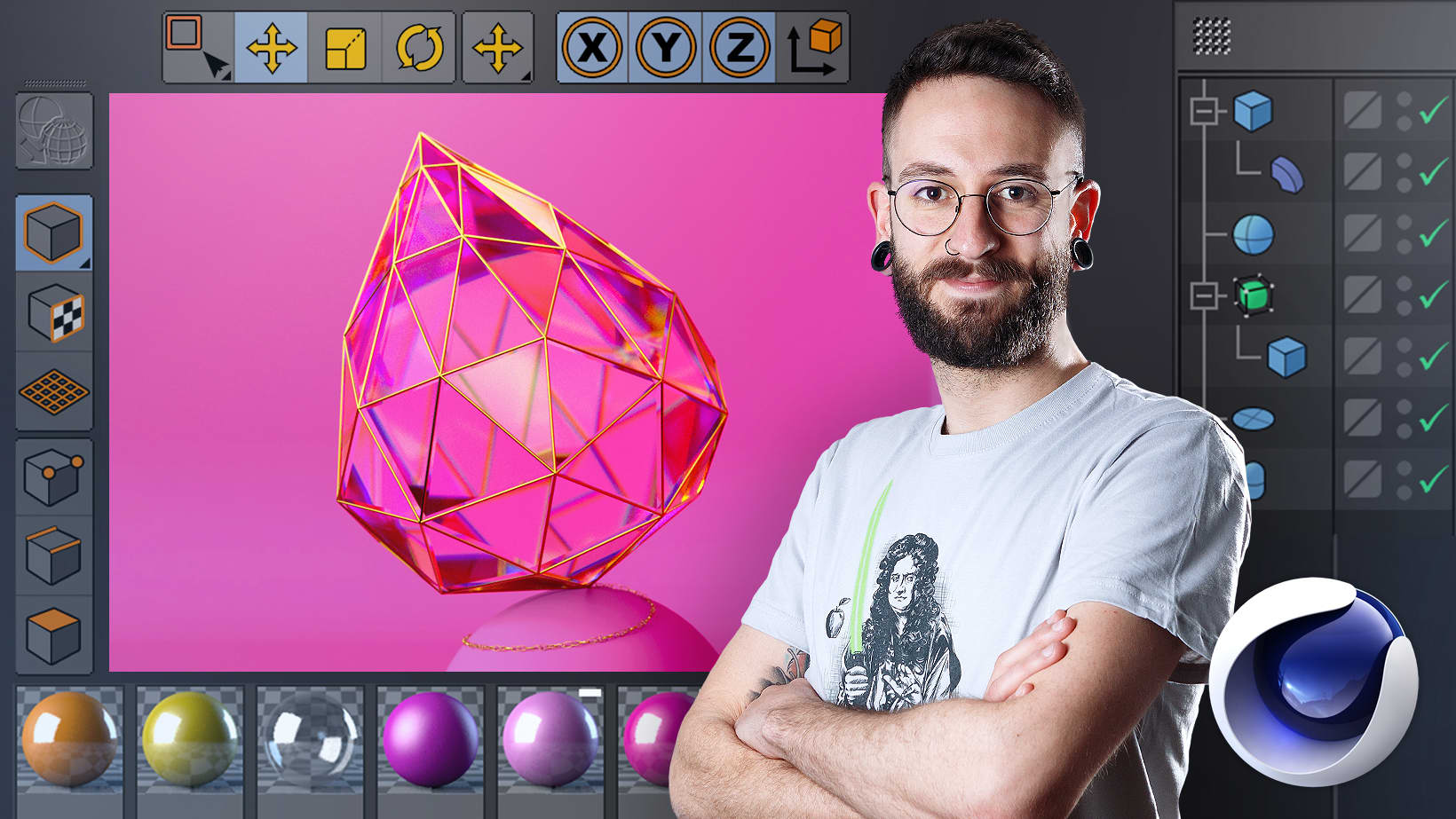
Learn 3D design from scratch to create unique shapes and animations and render them with OctaneRender
Domestika Basics · 6 courses included
-
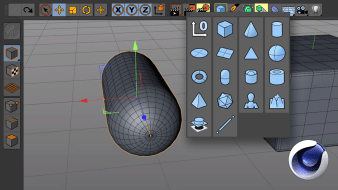
Course 1: Introduction and Basic Concepts
By Francisco Cabezas
Get to know the program, its interface, and the main tools
-
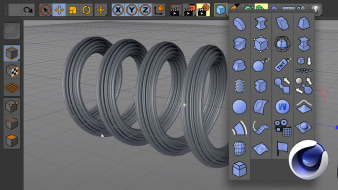
Course 2: Modeling I: Deformers and Line Modeling
By Francisco Cabezas
Learn to use different object deformers and explore spline modeling
-
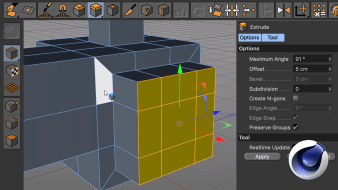
Course 3: Modeling II: Modeling from Scratch
By Francisco Cabezas
Learn classic modeling techniques with innovative tools
-
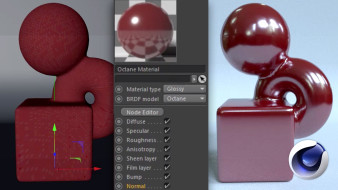
Course 4: Materials, Cameras, and Lighting with OctaneRender
By Francisco Cabezas
Bring your project to life by adding lights, cameras, and materials
-
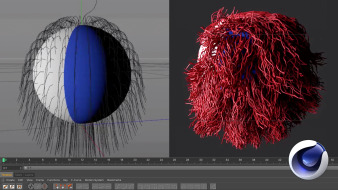
Course 5: Basic Animation Tools and Concepts
By Francisco Cabezas
Learn to use basic animation tools and tags
-
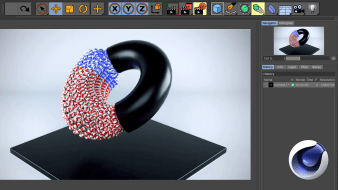
Course 6: Rendering and Post-production
By Francisco Cabezas
Learn the final steps to create an amazing animation
In this six-course Domestika Basics, learn Cinema 4D from scratch. Through a balanced mix of theory and practical content, master the essential tools and features to create everything from static images to 3D animations and render them with OctaneRender.
Begin by familiarizing yourself with Cinema 4D. Explore the interface and see how to configure project settings and navigate the workspace, along with some fundamental concepts for creating and editing objects.
Learn what object deformers are and how to use them before covering how to model with simple lines, otherwise known as splines.
Once you've got the basics, move on to modeling from scratch with classic techniques and discover other tools to help you shape your ideas, from Loop Cut and Polygon Bevel to Subdivision Surfaces and volume modeling.
Next, Francisco introduces you to the render engine OctaneRender—a cornerstone of this course—and explains how to set it up to start working. Experiment with creating different types of lights and materials using both OctaneRender and Cinema 4D.
Learn to make simple animations following the basic concepts of movement, scale, and rotation, and how to enhance them with a series of effects, including realistic collisions, gravity for rigid and soft bodies, and cloth simulation.
To wrap up this Domestika Basics on Cinema 4D, configure the optimal settings to render a static scene and a video animation and retouch them in Adobe Photoshop and Premiere Pro respectively.
Technical requirements
- ⦁ A computer with Windows 7 or macOS 10.12 Sierra (or later) and a graphics card that has the latest CUDA 9.1 drivers.
⦁ Cinema 4D (R17, R18, R19, or R20), OctaneRender, Adobe Premiere Pro, and Photoshop CC 2014 or later (you can buy them or download the seven-day trial versions from Adobe's website).
- 98% positive reviews (703)
- 24,769 students
- 70 lessons (8h 52m)
- 6 courses
- 17 downloads (8 files)
- Online and at your own pace
- Available on the app
- Audio: Spanish
- Spanish · English · Portuguese · German · French · Italian · Polish · Dutch
- Level: Beginner
- Unlimited access forever
- Updated on 11/13/2020
Reviews

Francisco Cabezas is a 3D designer living in Granada, Spain. He has spent most of his career working as a freelance designer in the United Kingdom.
After trying all the 3D programs out there, he decided to specialize in Cinema 4D as he found it to be the most complete in terms of 3D modeling, texturing, lighting, and rendering.
He currently teaches classes on 3D motion graphics and digital imagery at several design schools and works on branding and graphic design projects.
Content
Course 1: Introduction and Basic Concepts
-
U1
Presentation
-
Presentation
-
-
U2
Interface
-
Interface
-
-
U3
Document Settings
-
Document Settings
-
-
U4
Move through space
-
Move through space
-
-
U5
Flat views and perspective
-
Flat views and perspective
-
-
U6
Creating basic primitive figures
-
Creating basic primitive figures
-
-
U7
Modification of basic figures
-
Modification of basic figures
-
-
U8
Basic selections
-
Basic selections
-
-
U9
Hierarchies
-
Hierarchies
-
Course 2: Modeling I: Deformers and Line Modeling
-
U1
Welcome
-
Welcome
-
-
U2
Deformers: Bend + Screw
-
Deformers: Bend + Screw
-
-
U3
Deformers: Swell and skew
-
Deformers: Swell and skew
-
-
U4
Deformers: Sharpen and crush and stretch
-
Deformers: Sharpen and crush and stretch
-
-
U5
Deformers: FFD
-
Deformers: FFD
-
-
U6
Basic lines
-
Basic lines
-
-
U7
Extrusion
-
Extrusion
-
-
U8
Travel
-
Travel
-
-
U9
Cover
-
Cover
-
-
U10
Lathe
-
Lathe
-
-
U11
Practice
-
Practice
-
Course 3: Modeling II: Modeling from Scratch
-
U1
Welcome
-
Welcome
-
-
U2
Editable figures, basics
-
Editable figures, basics
-
-
U3
Cut cyclic
-
Cut cyclic
-
-
U4
Extrude and Inner Extrusion
-
Extrude and Inner Extrusion
-
-
U5
Bridge
-
Bridge
-
-
U6
Stitching and sewing and Welding
-
Stitching and sewing and welding
-
-
U7
Bevel
-
Bevel
-
-
U8
Advanced selections
-
Advanced selections
-
-
U9
Conversion to editable and subdivision groups into objects
-
Conversion to editable and subdivision groups into objects
-
-
U10
Center axes
-
Center axes
-
-
U11
Introduction to the Surface Branch
-
Introduction to the Surface Branch
-
-
U12
Modeling with Surface Subdivision
-
Modeling with Surface Subdivision
-
-
U13
Modeling with volume generator
-
Modeling with volume generator
-
-
U14
Practice
-
Practice
-
Course 4: Materials, Cameras, and Lighting with OctaneRender
-
U1
Welcome
-
Welcome
-
-
U2
Introduction to OctaneRender
-
Introduction to OctaneRender
-
-
U3
Area lights
-
Area lights
-
-
U4
IES lights
-
IES lights
-
-
U5
HDRI lights
-
HDRI lights
-
-
U6
Sun lights
-
Sun lights
-
-
U7
Introduction to the materials
-
Introduction to the materials
-
-
U8
Diffuse materials
-
Diffuse materials
-
-
U9
Reflective materials
-
Reflective materials
-
-
U10
Transparent materials
-
Transparent materials
-
-
U11
Playing with the nodes
-
Playing with the nodes
-
-
U12
Adapt materials
-
Adapt materials
-
-
U13
Choice of our camera
-
Choice of our camera
-
-
U14
Camera settings
-
Camera settings
-
-
U15
Practice
-
Practice I
-
Practice II
-
Course 5: Basic Animation Tools and Concepts
-
U1
Welcome
-
Welcome
-
-
U2
Basic animations: movement, scale and rotation
-
Basic animations: movement, scale and rotation
-
-
U3
Animation curves
-
Animation curves
-
-
U4
Align and wrap spline
-
Align and wrap spline
-
-
U5
Collision
-
Collision
-
-
U6
Rigid dynamic objects
-
Rigid dynamic objects
-
-
U7
Soft dynamic objects
-
Soft dynamic objects
-
-
U8
Dynamic objects fabrics
-
Dynamic objects fabrics
-
-
U9
Introduction to cloner
-
Introduction to cloner
-
-
U10
Effects 1
-
Effects 1
-
-
U11
Effects 2
-
Effects 2
-
-
U13
Voronoi fracture
-
Voronoi fracture
-
-
U13
Hair
-
Hair
-
-
U14
Particles
-
Particles
-
-
U15
Practice
-
Practice
-
Course 6: Rendering and Post-production
-
U1
Welcome
-
Welcome
-
-
U2
Render static
-
Render static
-
-
U3
Assembly and Post-production in Photoshop
-
Assembly and Post-production in Photoshop
-
-
U4
Render video
-
Render video
-
-
U5
Assembly and Post-production in Premiere Pro
-
Assembly and Post-production in Premiere Pro
-
See the content of the 6 courses
About Domestika Basics
Domestika Basics is a series of courses focused on teaching the most commonly used software by creative professionals worldwide.
The content has been meticulously curated and is intended for both students going into a new creative field and more experienced professionals who want to polish their skills.
Learn with the best Domestika teachers through practical lessons, tons of resources, and a progressive difficulty that'll allow you to see results from day one.
Domestika Basics will allow you to step up your professional game and be prepared to score better projects.
-
Without prior knowledge.
Domestika Basics gives you everything you need to get started in a new creative field and become an expert in it.
-
Focused on the tool.
Discover its main components, techniques, and the tried-and-true methods you need to master it.
-
Learn fast
With a straightforward, step-by-step approach, our outstanding professionals will teach you how to get the most out of the program.
-
Certificates Plus
If you're a Plus member, get a custom certificate signed by your teacher for every course. Share it on your portfolio, social media, or wherever you like.



spiralya
PlusMuito bom !
View translation
Hide translation
tamaratagon
Practico
View translation
Hide translation
borraslucas
muy completo.
View translation
Hide translation
chris.kearney
Needs to be updated. Cinema4D is in R25 and the menus do not match what is shown on the course screen. In addition Francisco is using a non-english version of Cinema4D. I only understand english so it is almost impossible to follow what is going on screen. I may be able to figure out some concepts but this course won't work as a user guide. This may be a very good course but only if you speak the same language Francisco speaks.
santy.llauger87
Gran curso. El profesor lo hace fácil de comprender.
View translation
Hide translation